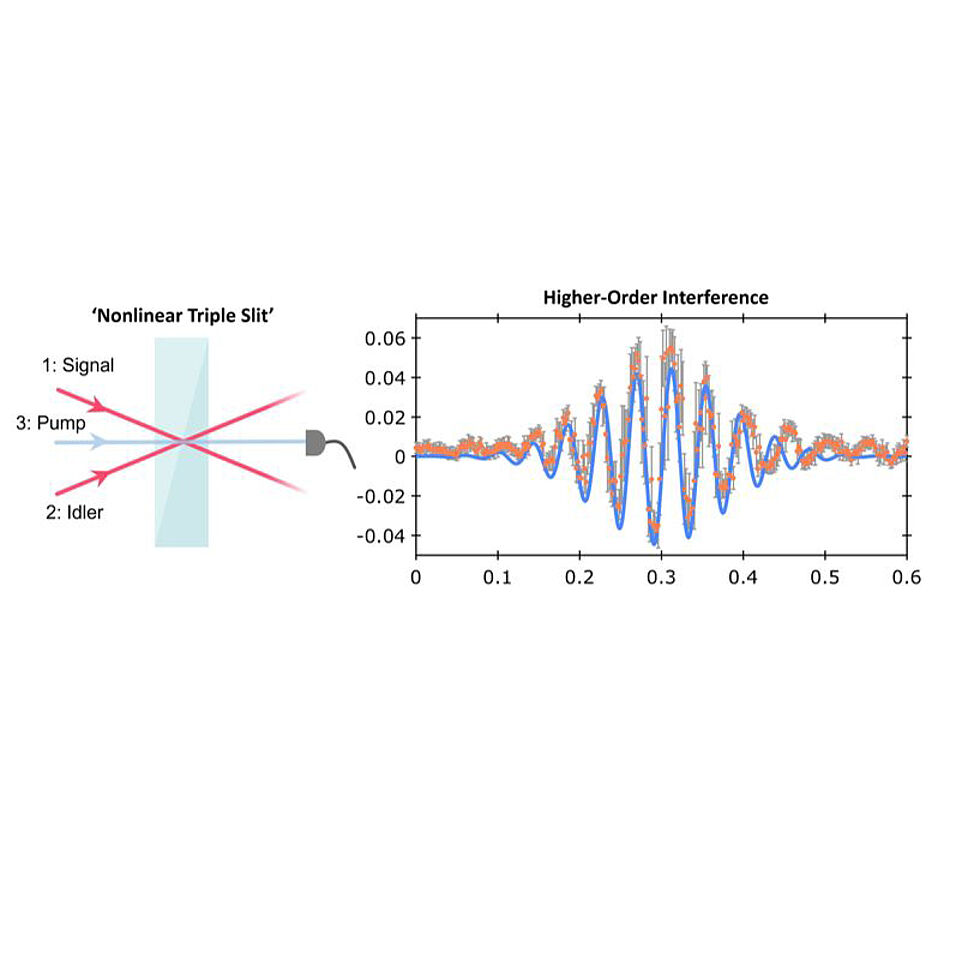Abstract
Interference between two waves is a well-known concept in physics, and its generalization to more than two waves is straightforward. The order of interference is defined as the number of paths that interfere in a manner that cannot be reduced to patterns of a lower order. In practice, second-order interference means that in, say, a triple-slit experiment, the interference pattern when all three slits are open can be predicted from the interference patterns between all possible pairs of slits. Quantum mechanics is often said to only exhibit second-order interference. However, this is only true under specific assumptions, typically single particles undergoing linear evolution. Here we experimentally show that nonlinear evolution can in fact lead to higher-order interference. The higher-order interference in our experiment can be understood using a simple classical or quantum description, namely optical coherent states interacting in a nonlinear medium. Our work shows that nonlinear evolution could open a loophole for experiments attempting to verify Born's rule by ruling out higher-order interference.
- P. Namdar, P. K. Jenke, I. Alonso Calafell, A. Trenti, M. Radonjic, B. Dakic, P. Walther, L. A. Rozema
Experimental higher-order interference in a nonlinear triple slit
Physical Review A 107, 032211 (2023).

